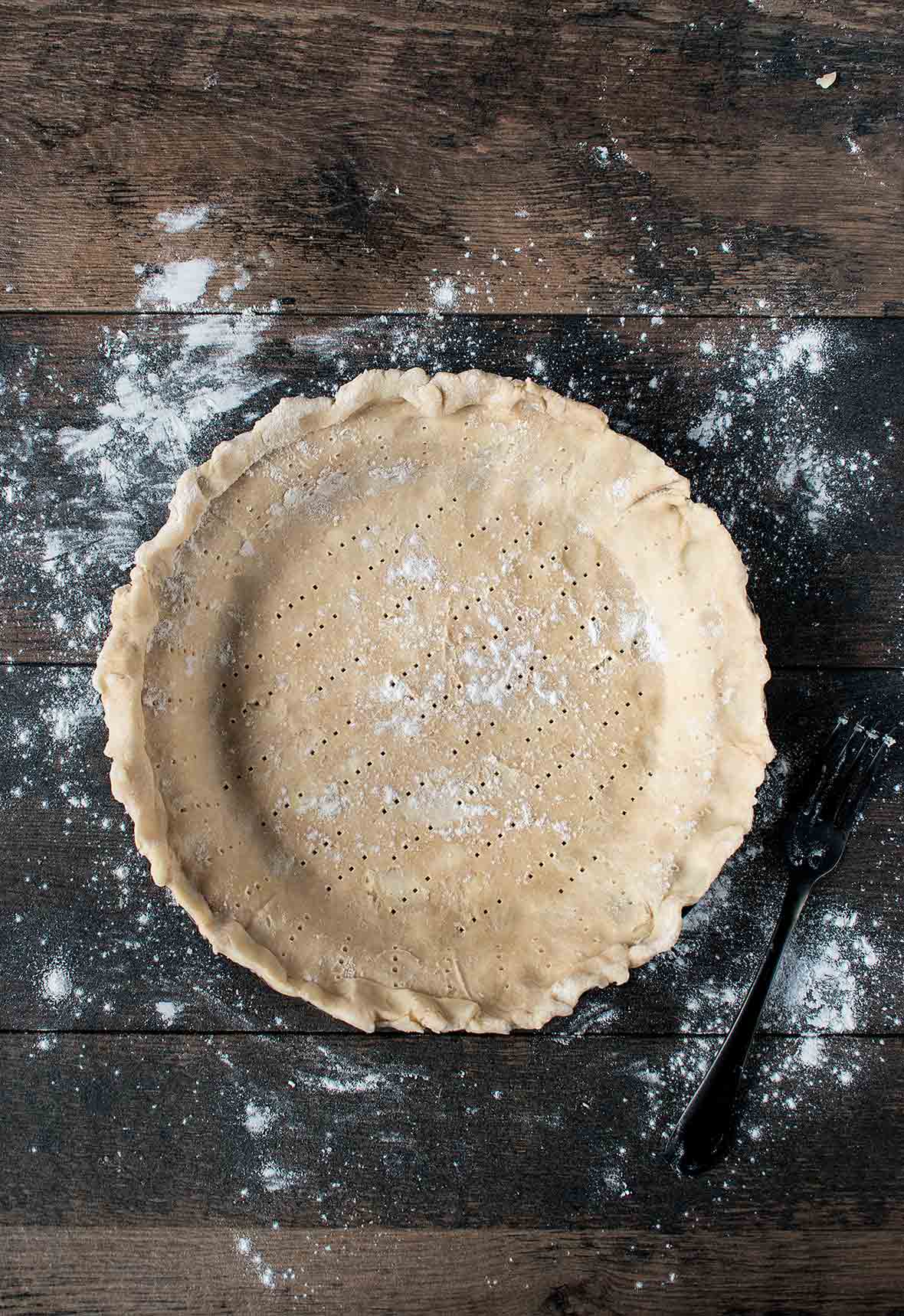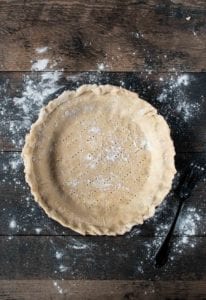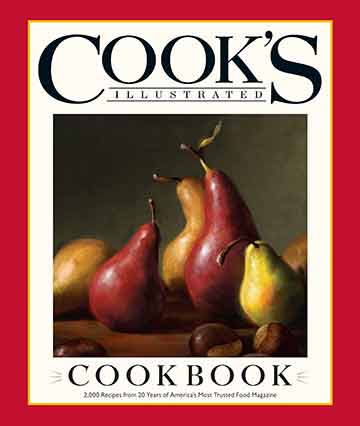

Lard and Butter Pie Crust
Ingredients
- 2 1/2 cups all-purpose flour, stashed in the freezer until cold
- 1 teaspoon salt
- 2 tablespoons granulated sugar
- 13 tablespoons (6 1/2 oz) cold unsalted butter, cut into 1/2-inch (12-mm) cubes
- 8 tablespoons (4 oz) cold lard, cut into 1/2-inch (12-mm) cubes
- 4 to 6 tablespoons ice water
Instructions
- In a food processor fitted with metal blade, combine the flour, salt, and sugar.
- Toss in the butter cubes and process with five 1-second pulses.
- Toss the cold lard into the processor and continue pulsing until the butter is no larger than the size of peas and the flour is pale yellow and resembles coarse cornmeal, about four 1-second pulses. Dump the flour mixture into a medium bowl.
- Sprinkle 3 tablespoons of ice water over the flour mixture. Working quickly, use a fork to fluff and mix thoroughly. Squeeze a handful of dough—if it doesn’t stick together, add the remaining water, 1 tablespoon at a time.
- Handling the dough as little as possible, divide it into 2 balls, one slightly larger than the other. Flatten each portion of dough into 6-inch discs. Wrap in plastic wrap and refrigerate for 30 minutes.
- On a lightly floured work surface, roll each portion of dough to slightly larger than your pie plate. Carefully drape the slightly smaller portion of dough in the plate. If desired, prick the bottom crust with the tines of a fork, if desired.
- Fill with your favorite pie filling recipe, top with the remaining portion of dough and crimp the edges. Trim any excess dough that hangs over the edge. Freeze the unbaked pie for up to several weeks or transfer it to the fridge for at least 30 minutes before baking according to your recipe. Originally published January 9, 2002.

Nutrition
Nutrition information is automatically calculated, so should only be used as an approximation.
Recipe Testers’ Reviews
This was one of the best pie crusts I’ve ever tasted. It was also one of the easiest to make. With this recipe in your arsenal, you’ll always get great compliments on your pies.











Do you roll the dough with additional flour or roll between parchment paper with no or little extra flour? Should the water be added so most of it sticks together and some still falling off or more water so that it sticks well (but not saturated, of course!)?
Thanks for the recipe!
Hi Eileen, I would add just enough water for the dough to begin to come together. As far as rolling out the dough, either method would work fine, just a little flour to prevent sticking, if needed.
I have tried every crust recipe out there, this is the best I have ever made. People
go nuts over it. If you are looking for the “perfect one” this is it.
We’re not going to argue with you, WKChandler. Lard, in just the right proportions, makes everything better…so glad you had the same experience that we’ve had. Appreciate you chiming in…just curious, what filling accompanied this crust?
OMG!!!! This is the best crust ever! I will never buy pre-made again that’s for sure. Summer is almost here and I think I’ll be making my berry pies ahead freeze them and always have one on hand to throw in the oven. I even froze extra dough and used a month later and it was as good.
Denise, so glad you found the recipe. It really is one the best I’ve made.